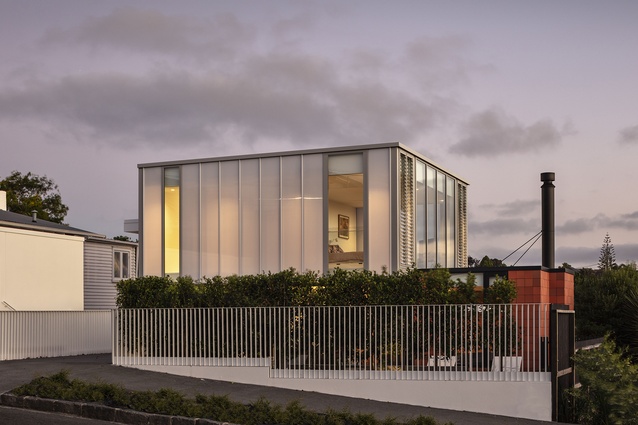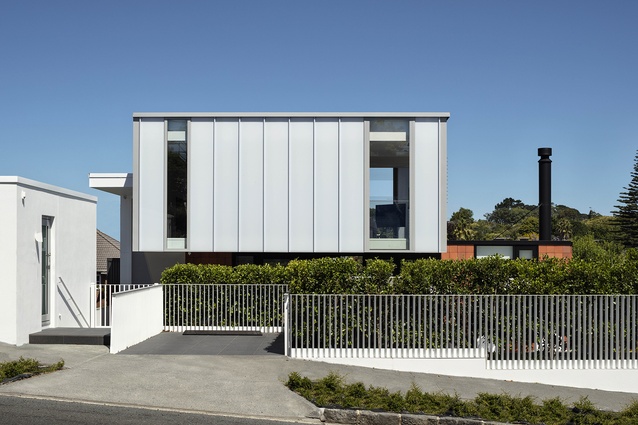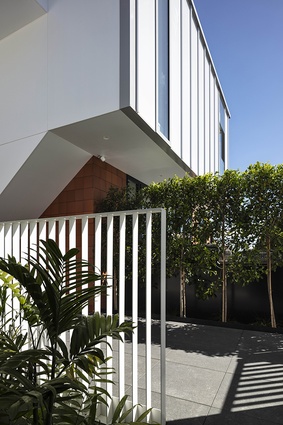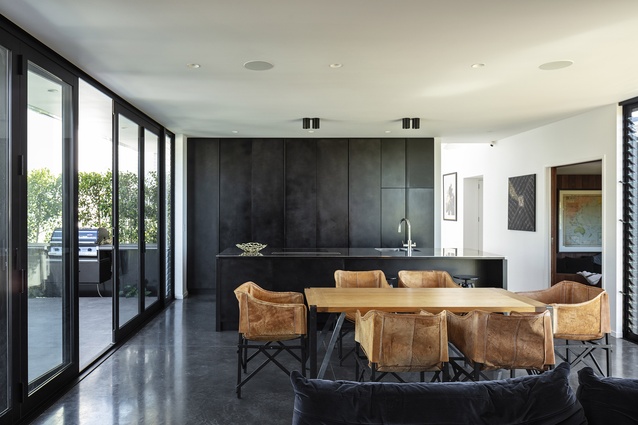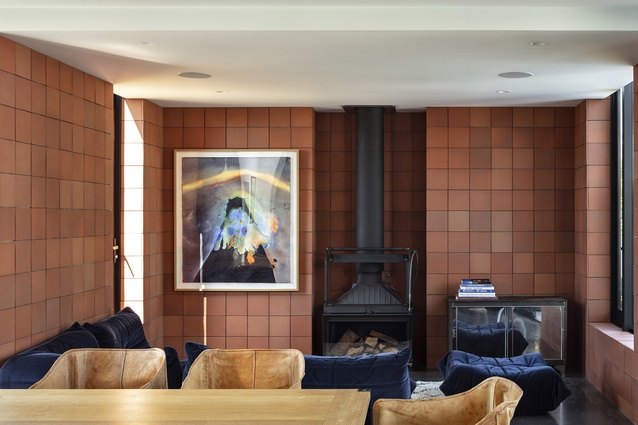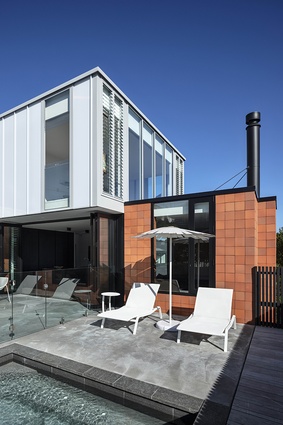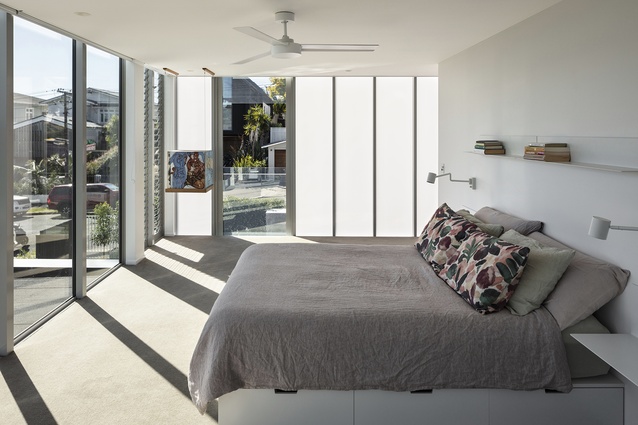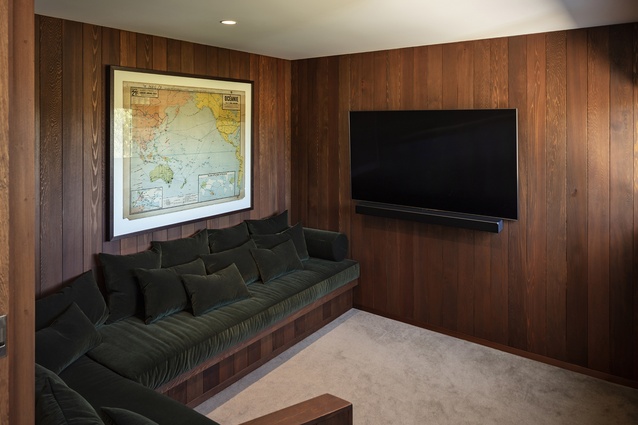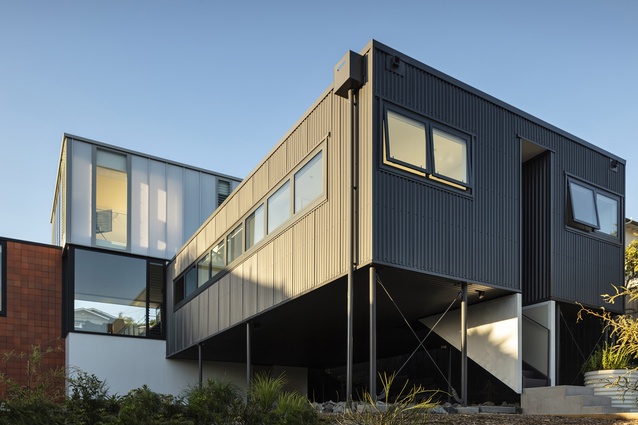Sculpting form and material
Awards spotlight: Architect Sam Caradus from Crosson Architects explores and contrasts material and form in the Te Kāhui Whaihanga NZIA Local Award-winning Light and Clay.
If you were asked to name a local practice synonymous with sculptural design, you would be hard-pressed to go past Crosson Architects. The studio’s celebrated Light Mine, DNA House and the Orange all make bold architectural statements, exploring and contrasting dynamic forms with playful delight. In one of the team’s most recent projects, the Auckland Local Award-winning Light and Clay, architect Sam Caradus continues the Crosson approach, sculpting together both spaces and experiences beautifully in what the NZIA jury found to be “an assured study of materiality”.
Providing a confident insertion to the suburban setting of Westmere – an enclave of largely renovated and altered pre-1950s’ bungalows and villas – Light and Clay presents as a series of contrasting box forms, each clad in a unique material.
Only one is immediately viewable from the street – the lightest of the three volumes – a translucent box, which appears at first glance to float above the hedge line, cantilevered over the structure beneath.
In contrast, the steep, south-falling site’s former occupant, a one-storey brick and tile house, had been barely visible to its neighbours, set two metres below street level. Its almost subterranean positioning and lack of direct sunlight saw the clients come to Crosson looking to access the northerly aspect and maximise the sun while maintaining their privacy.
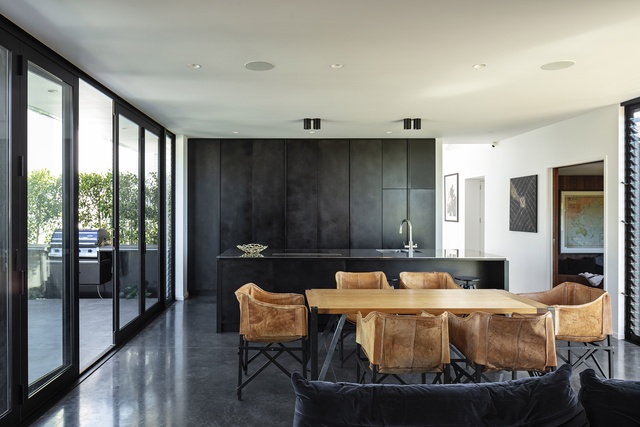
Armed with evocative images of work they admired, including residential projects by Australian architects Austin Maynard and Clare Cousins, “they were happy to be experimental with material, space and form,” says Caradus.
To liberate the site and realise the clients’ brief required a design that lifted the floor level of the house dramatically. An ‘L’ form developed, maximising site, sun and aspect, with entry to the new home through a landscaped courtyard to the front door. From the sculptural arrival and dynamic exposed stair, the interiors unfold into a series of spaces and vistas.
The first zone, at ground level, is the main living area of the house, including kitchen, dining and living, which connects to a north-facing courtyard and plunge pool. Here, landscaping and design work hand in hand to provide both permeability and privacy from the public realm.
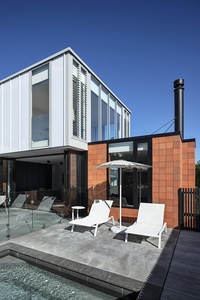
This box is clad in Middle Earth terracotta tiles, inside and out, referencing the brick of the previous house but also talking to “parties and connection, the fire, dining and cooking rituals,” explains Caradus.
Above, housed within the translucent Danpalon (a multi-cell, polycarbonate material), the master bedroom, en suite and wardrobe enjoy a light-filled, private domain, with intermittent glazed apertures offering views and ventilation. “By elevating this space, our clients suddenly had these vistas to the west, including the Waitakere Ranges, Meola Park and MOTAT, that they had never experienced from this site before,” says Caradus.
The third zone is a black, corrugated iron-clad box at the back. “We wanted to express this as a utilitarian zone, housing all the services: bathrooms, laundry, office space and supplementary bedroom,” Caradus says. Positioned on stilts, this space hovers above the ground as if it, too, is floating and the circulation wedge to the exterior almost appears as a shearing shed stock chute. Under this box, a landscaped outdoor yoga area looks up to the cladding as it wraps around the underside, enabling the box to be experienced in a number of elevations.
Caradus says that he has found the way the project has been received visually and how people have interpreted and responded to it very interesting. “Every project is an individual response to site, context, brief, budget and client, which yields diverse, dynamic and delightful outcomes. This project is very much the result of a collaborative conversation, in terms of both form and materiality, and also in crafting spatial relationships that reflect the way these clients live.”
The result – a fresh, refined, uplifting house, fully deserving of its Local Award and an enlightened addition to the neighbourhood.

